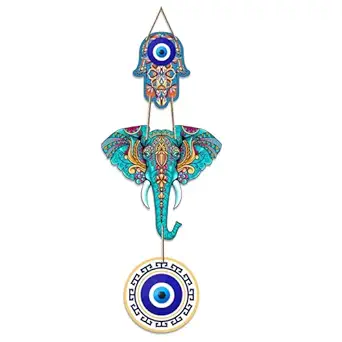હે નામ રે સબસે બડા તેરા નામ
હો શેરોવાલી ઉંચે ડેરો વાલી
માતા ચૌતાવાલી બીગડે બનાદે
મેરે કામ નામ રે
ઐસી કઠીન પલ ઐસી ઘડી હૈ
વિપદા આન પડી હૈ
તુહી બતા અબ યે દુનિયા સારી
રસ્તા રોક પડી હૈ
મેરા જીવન બના એક સંસાર હો શેરાવાલી
ઉંચે ડેરો વાલી માતા ચૌતાવાલી
બીગડે બનાદે મેરે કામ નામ રે
હે નામ રે સબસે બડા તેરા નામ
Overview of "He Naam Re Sabse Bada Tera Naam"
Title & Meaning
'He Naam Re Sabse Bada Tera Naam' is a devotional Garba song performed during Navratri, celebrating the divine presence and festive spirit.
Artist & Recording Details
The Garba has been performed by various artists, though specific recording details are limited.
Genre & Occasion
This Garba belongs to the devotional folk genre, performed especially during Navratri nights.
Language & Dialect
Lyrics are in Hindi with regional expressions, making it resonate with local audiences.
Popularity & Versions
The Garba is popular in Gujarat during Navratri, with multiple renditions.
Lyrics Structure & Themes
Devotional Invocation
The song opens by invoking blessings from Goddess Amba, setting a devotional tone for dancers.
Repetitive Chorus
The chorus repeats key devotional phrases to encourage audience participation.
Imagery & Symbolism
Lyrics include vivid descriptions of colors, dance, and divine presence to enhance the festive spirit.
Community Engagement
Its lively rhythm fosters a sense of community among participants during Garba nights.
Spiritual Uplift
The song inspires joy and spiritual upliftment as devotees dance together.
Musical & Performance Elements
Instrumentation & Rhythm
Traditional instruments like dhol and manjira provide a rhythmic backdrop for Garba performances.
Tempo Variation & Dynamics
Verses start moderately and lead into fast-paced choruses to match Garba dance steps.
Live vs Studio Versions
Live performances often include improvisation and audience call-response, whereas studio versions are polished.
Dance Cues & Movements
Dance steps like claps, spins, and footwork align with lyrical phrases and musical beats.
Audience Participation
Repetitive lines and beats invite collective participation, making performances engaging.
Festival & Cultural Significance
Navratri Significance
Performed during Navratri, the Garba celebrates devotion, energy, and cultural heritage.
Community Identity & Bonding
Garba strengthens social bonds and fosters cultural identity among participants.
Preserving Folk Tradition
Through performances, traditional Gujarati folk music and dance are preserved for future generations.
Emotional & Spiritual Uplift
Energetic performances uplift spirits and connect devotees with the divine.
Cultural Education
Younger generations learn traditional lyrics, dance steps, and customs through participation.
How to Use & Share
Translations & Transliteration
Providing transliterations helps non-Hindi speakers follow along.
Audio / Video Embeds
Embedding videos or audio allows users to experience Garba directly on the site.
Printable Lyrics & PDFs
Downloading lyrics PDFs enables devotees to follow and perform during Garba nights.
Performance Tips for Garba Nights
Tips on rhythm, choreography, and audience engagement improve overall performance.
SEO & Sharing Enhancements
Optimizing content with keywords, meta tags, and social sharing increases reach and indexing.
'He Naam Re Sabse Bada Tera Naam' is a devotional Garba song performed during Navratri, celebrating the divine presence and festive spirit.
The Garba has been performed by various artists, though specific recording details are limited.
This Garba belongs to the devotional folk genre, performed especially during Navratri nights.
Lyrics are in Hindi with regional expressions, making it resonate with local audiences.
The Garba is popular in Gujarat during Navratri, with multiple renditions.
The song opens by invoking blessings from Goddess Amba, setting a devotional tone for dancers.
The chorus repeats key devotional phrases to encourage audience participation.
Lyrics include vivid descriptions of colors, dance, and divine presence to enhance the festive spirit.
Its lively rhythm fosters a sense of community among participants during Garba nights.
The song inspires joy and spiritual upliftment as devotees dance together.
Traditional instruments like dhol and manjira provide a rhythmic backdrop for Garba performances.
Verses start moderately and lead into fast-paced choruses to match Garba dance steps.
Live performances often include improvisation and audience call-response, whereas studio versions are polished.
Dance steps like claps, spins, and footwork align with lyrical phrases and musical beats.
Repetitive lines and beats invite collective participation, making performances engaging.
Performed during Navratri, the Garba celebrates devotion, energy, and cultural heritage.
Garba strengthens social bonds and fosters cultural identity among participants.
Through performances, traditional Gujarati folk music and dance are preserved for future generations.
Energetic performances uplift spirits and connect devotees with the divine.
Younger generations learn traditional lyrics, dance steps, and customs through participation.
Providing transliterations helps non-Hindi speakers follow along.
Embedding videos or audio allows users to experience Garba directly on the site.
Downloading lyrics PDFs enables devotees to follow and perform during Garba nights.
Tips on rhythm, choreography, and audience engagement improve overall performance.
Optimizing content with keywords, meta tags, and social sharing increases reach and indexing.


